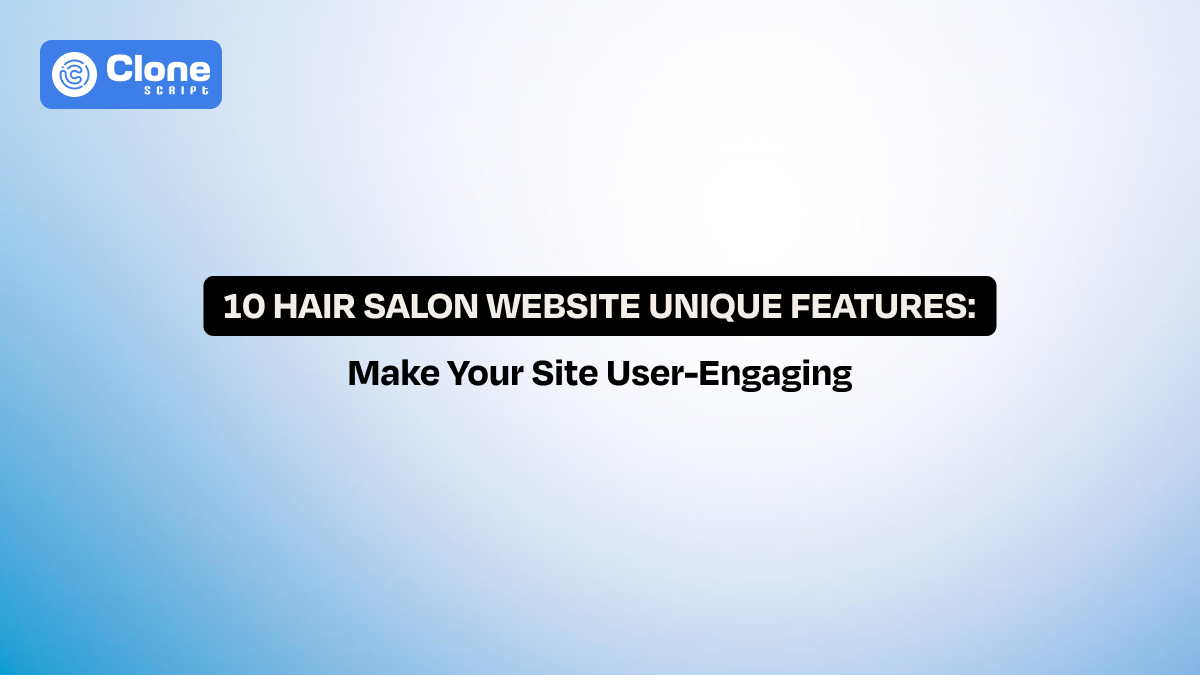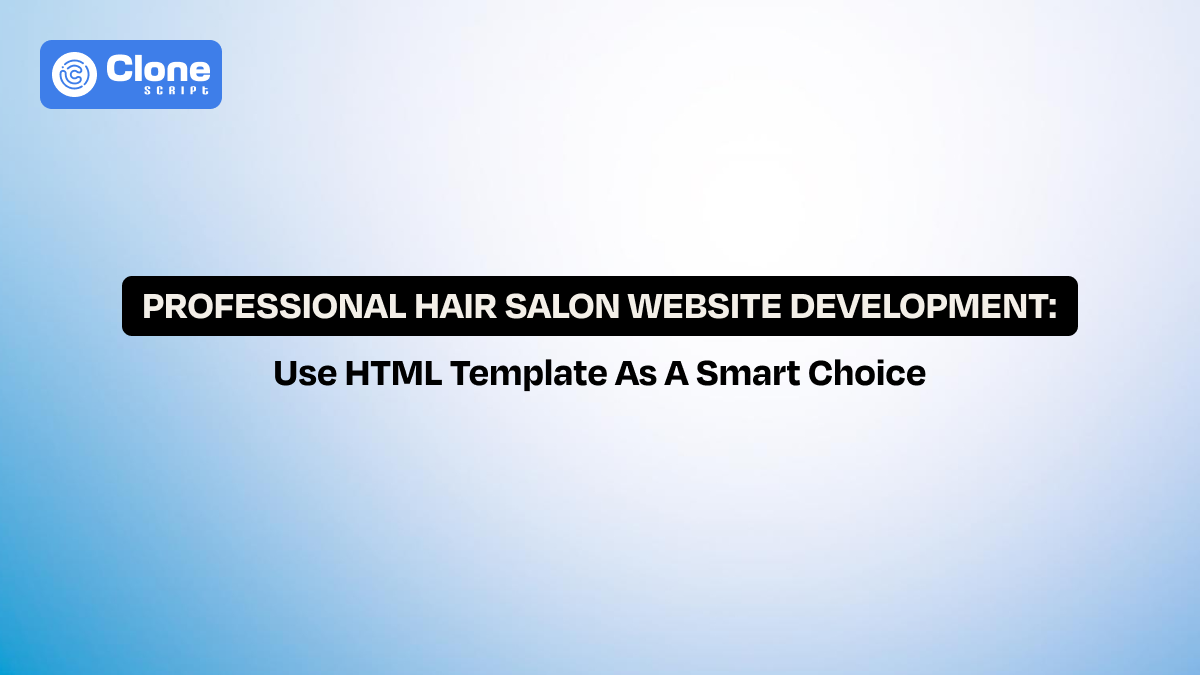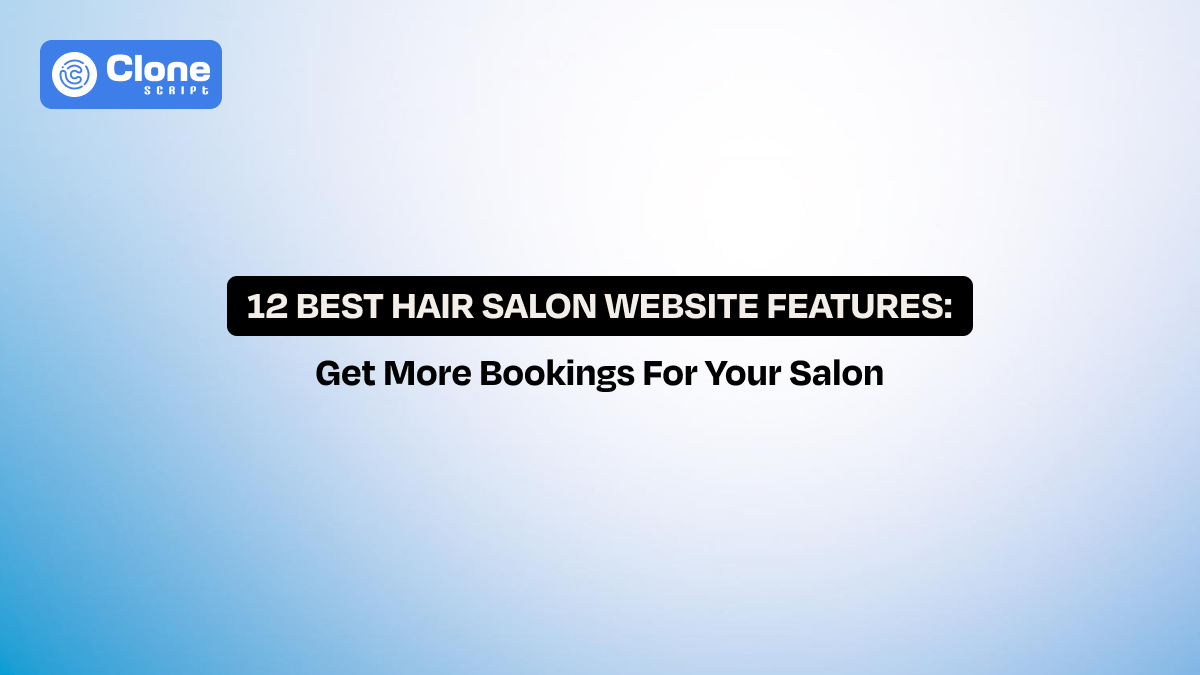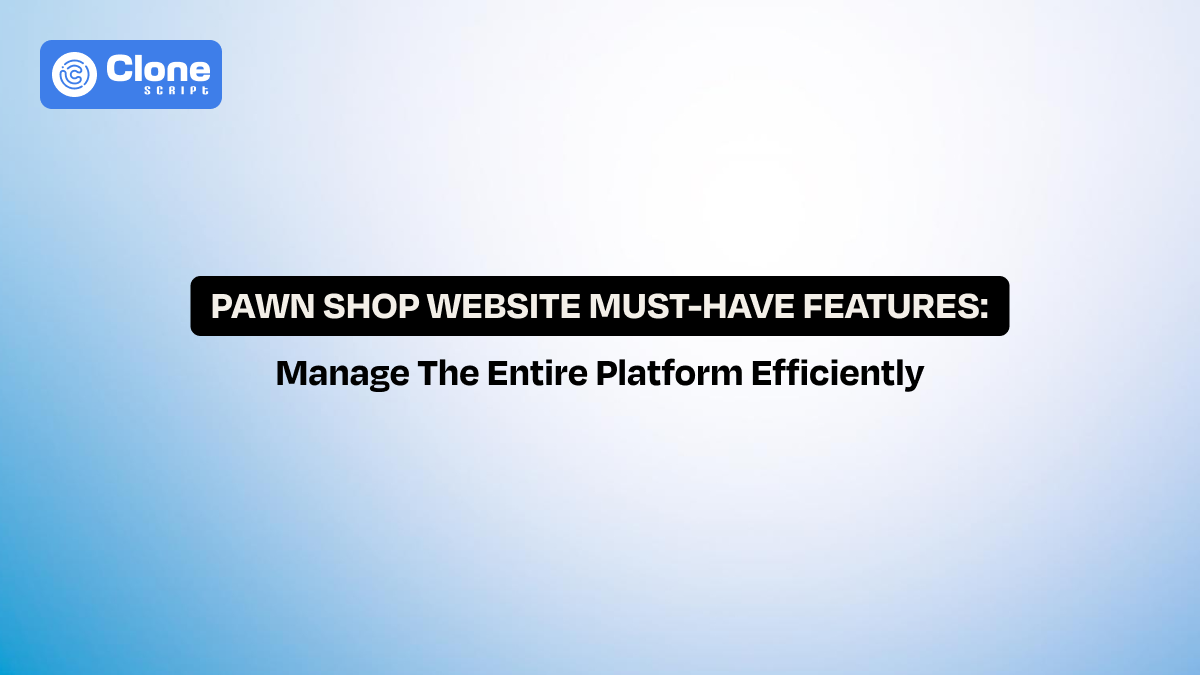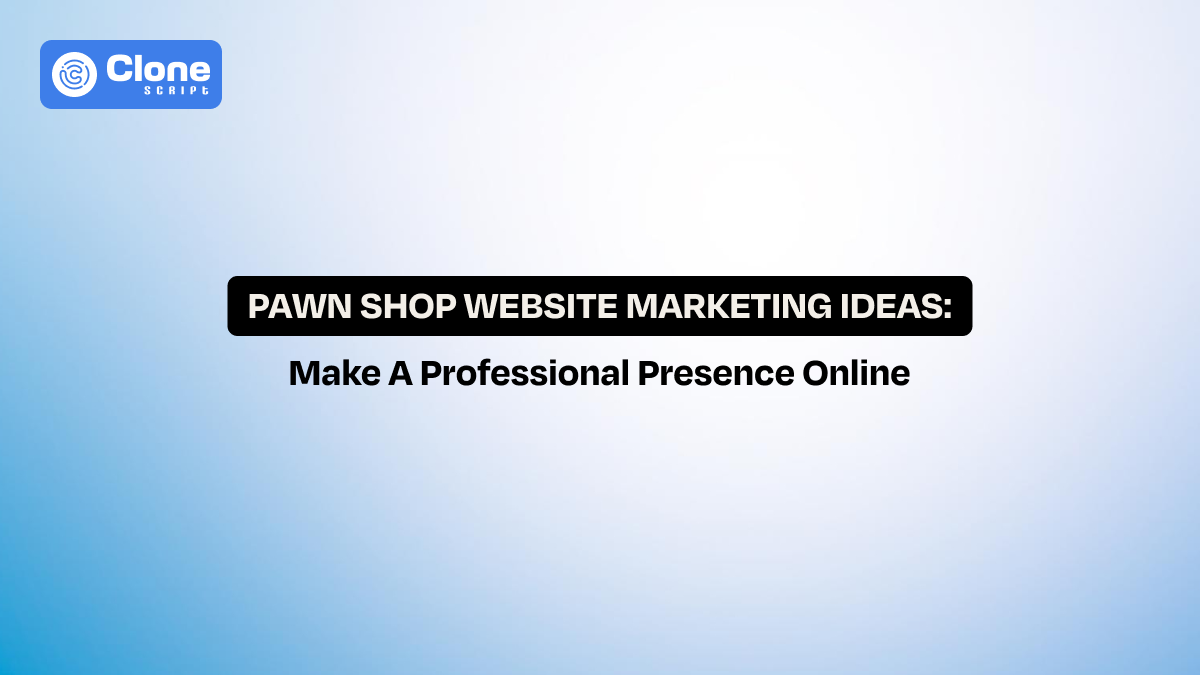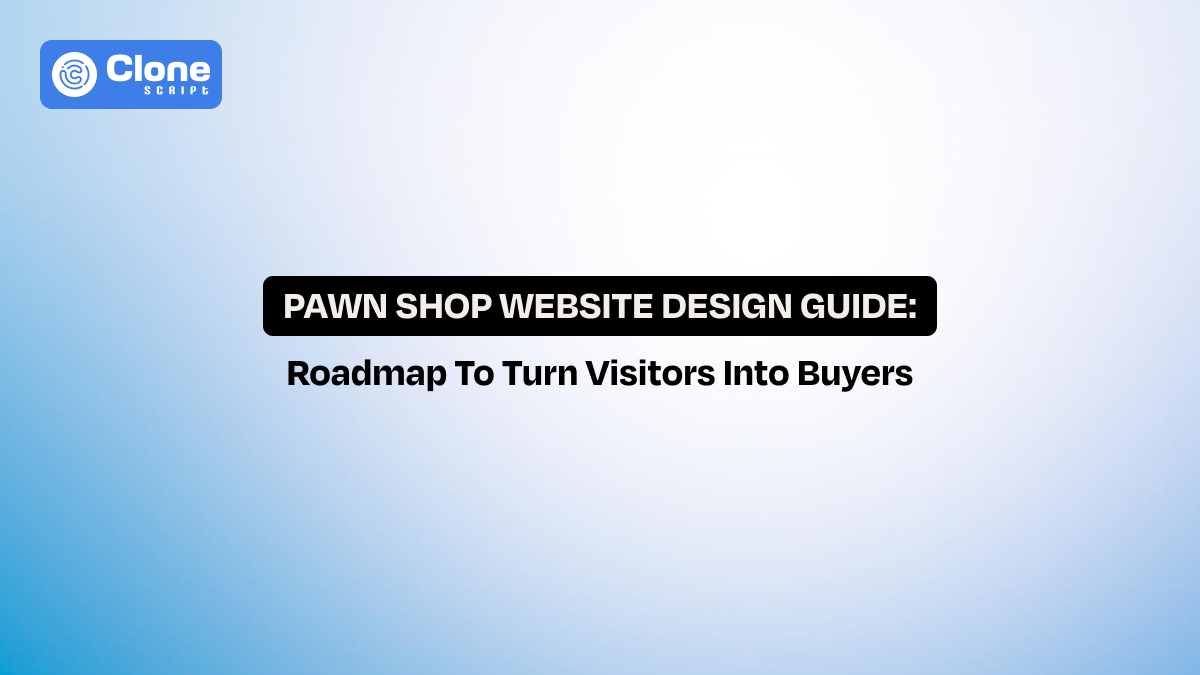10 Unique Features Every Hair Salon Website Should Have
Here’s a fact worth noting: over 81% of beauty and salon clients now research a business online before booking an appointment. Having a salon website is one kind of privilege to get those users and convert them into clients.
Yet many salon brands fail to reflect the elegance, personality, and professionalism of the business they represent. Their websites don’t have features to convince users.
This blog explores 10 essential features that turn a basic website into a client-converting tool. Also, we present a more reliable solution to be used in development.
How to Grow Your Brand Online with a Hair Salon Website?
A salon’s website is its digital storefront. It’s where branding meets conversion, and where client loyalty often begins.
Creating a brand-first salon website involves much more than colors and fonts. It’s about shaping a consistent online identity that builds trust and familiarity.
Here’s what matters most:
-
Local Visibility through SEO
Salon websites should dominate local search results. Because most of the searches tend to book an appointment.
Optimize for terms like “hair stylist near me” and stick with the local salon SEO tips such as location schema, Google Maps integration, and customer reviews.
This will not only make the site appear in search results but also create a trust factor when clients find the online salon in the top position.
-
Consistent Branding Across Platforms
To accomplish the maximum conversion goal, the branding consistency sounds professional. It lets the clients know they’re interacting with the genuine service provider and can feel a delightful experience.
The website should mirror the salon’s physical experience. From the same color themes and language tone to the ambiance. This creates instant recognition for clients to return.
-
Conversion-Driven UX Design
Every click should lead visitors toward one goal: booking an appointment.
There are three ways to do:
-
Use clear call-to-actions (CTAs)
-
Integrate short forms for requests
-
Prefer interactive design elements
These can improve user experience and conversion. For that, you have to understand the intent behind visiting the site. Once you configure it then it helps in salon website designing.
When crafted right, a website becomes not just a portfolio but a growth engine that improves visibility, trust, and revenue.
How Unique Features Make Your Hair Salon Website Stand Out?
The beauty industry's success is based on uniqueness, from hairstyles to branding. A website should reflect that individuality.
Generic templates and predictable layouts might save time, but they don’t capture the essence of the brand or the sophistication of the salon. That’s why modern salon websites focus on personalization, storytelling, and seamless digital functionality.
Why unique features matter:
-
They create a memorable first impression. It is important to capture the attention of clients from the initial integration.
-
They strengthen brand credibility and emotional connection. To win trust and make them confident to take your service, this is required.
-
They simplify booking and retention to make operations smoother for owners. Overall, the platform has been managed well and is scaling.
The next section breaks down 10 unique features that should be integrated when designing a hair salon website in 2025 and beyond.
10 Unique Features to Add to Your Hair Salon Website Now
Here’s the list of features that make your salon website preferable:
-
Captivating Homepage
-
Hero Section and Intro Video
-
Personalized User Experience (UX)
-
Professional and Consistent Visual Branding
-
Client-Focused Messaging
-
Online Appointment Reminders
-
Gift Cards, Digital Vouchers, and Referral Incentives
-
System Integrations
-
Privacy, Accessibility, and Secure Data Practices
-
Post-Booking Engagement and Follow-Up
Let’s understand them in detail.
1. A Captivating Homepage That Reflects Your Brand
The homepage is your digital front door, and it needs to feel like walking into the salon.
According to research, users form their first impression of a website in under 0.05 seconds. This means developers have just a blink to communicate the brand’s quality, tone, and trustworthiness.
Best practices to follow:
-
Use a clean, responsive layout that loads quickly. Test the performance before making the website live.
-
Add professional imagery of real stylists and clients. Keep in mind that the original photos will create trust in the client’s minds.
-
Keep your hair salon homepage design simple, elegant, and conversion-focused. Don’t be either too fancy or too simple. Maintain the balance.
-
Include a “Book Now” button above the fold. It is an open secret that having an easy-to-find CTA will help in conversion growth.
Your homepage should not only impress. Design with the methodology to convert visitors into salon clients. You can use a salon website Figma UI design kit, where every component can save your time, and with customization, you can move forward with the development.
2. Interactive Hero Section or Intro Video
Those days are gone when static HTML sites ruled the web. As of now, most of the sites designed with the current trends in mind get more attention. The landing pages contain a convincing hero section that relates to the client’s intention.
Especially in the beauty industry, motion and interactivity help in telling a story to clients and convince them to schedule an online appointment.
Adding a short video background or a subtle scrolling animation can showcase the salon’s vibe, creativity, and professionalism in seconds.
Implementation Tips for Developers:
-
Keep video length under 10 seconds for load efficiency. If it takes time, then go fix it first because affecting user experience will put down the branding and search rankings.
-
Include captions or titles for accessibility. This will help the visitors understand what the visual content is all about.
-
Feature real services, not stock footage. As clients want to justify the salon’s expertise, they want to know what it can do. With real image and video content, it can be done.
Understand the fact: Videos humanize the brand and instantly boost engagement and session time, two key metrics of success rate definition.
3. Personalized User Experience (UX) for Every Visitor
Human psychology says that if you feel a person with their past activities, they will make you a friend and consider you.
The same applies in the business.
In the beauty and hair treatment industry, personalization plays a key role in higher conversions of bookings. A personalized experience sets a premium salon apart from the rest.
Using client data (ethically and with consent), websites can offer custom greetings, service recommendations, and loyalty-based content.
For instance, return visitors might see a pop-up saying:
-
“Welcome back, Sarah! Book your next color refresh with 10% off.”
This is where developers can shine. Making a salon website user experience that feels intelligent, personal, and customer-first will win half of the battle.
4. Professional and Consistent Visual Branding
Visual consistency is more than just design—it’s the foundation of brand trust. A well-maintained hair salon website should reflect the same elegance and atmosphere that clients experience in person. Every visual element, from the color palette and typography to imagery, must align seamlessly to create a unified, premium aesthetic.
-
To maintain harmony, choose two or three signature colors and apply them consistently across the site.
-
Use cohesive imagery with similar lighting, tone, and background textures to evoke the salon’s unique mood.
-
Highlighting staff profiles with professional portraits also personalizes the experience, building a deeper connection with visitors.
When visual branding is intentional and consistent, it conveys reliability and sophistication. This attention to detail not only enhances user perception but also strengthens salon branding online, transforming each digital interaction into a reflection of the salon’s true identity in refined, professional, and unmistakably authentic.
5. Client-Focused Messaging and Emotional Copywriting
While design attracts, words convert. Once the words are related to the specific needs of clients, they will be sure to click the “Book Now” button.
Expert web copywriting should speak to emotions, not just features. In other words, it has to highlight how the salon makes people feel realistic and professional.
Here’s the example to look for.
Instead of saying “We offer balayage and color correction,” try “Rediscover your confidence with precision styling and care.”
Keep note that beauty salon website content that evokes emotion helps visitors visualize transformation, a key psychological driver for bookings.
Developers should collaborate with copywriters to check that every CTA, headline, and description aligns with the brand’s promise.
6. Online Appointment Reminders and Confirmation System
Automating appointment management is one of the best salon website features in 2025. With only a professional website design and content, you can’t get more bookings. To maximize appointment retention, reminders along with a confirmation system are required.
Nowadays, there’s no need to spend a large amount on IT infrastructure development.
Platforms like Fresha and Booksy provide built-in APIs for seamless booking and reminders. These integrations reduce no-shows and improve customer satisfaction.
Development Essentials:
-
Offer SMS and email confirmations regarding the booking status, like successful, canceled, and in-queue.
-
Add calendar syncing for Google and iCal. Picking a prioritized date and time for an appointment will improve the conversions.
-
Include options for easy rescheduling or cancellation. If the slots are not available at the moment, then the rescheduling feature will maintain the booking open, and cancellation will maintain the trust.
You can also say that this is the most important feature of any online salon.
Implementing automation here makes every visitor’s experience smooth, and it manages brand reputation as a trust-building salon website.
7. Gift Cards, Digital Vouchers, and Referral Incentives
This feature is useful for online marketing for salon businesses.
Why?
Thinking that revenue ends at checkout, then it’s false. Clients who visit the salon once in a lifetime come back only when the brand has something more for them.
That’s where “gift cards, vouchers, and referral incentives” are useful.
Through gift cards and referral programs, it generates ongoing engagement and attracts new customers.
Ideas to Implement:
-
Offer digital vouchers for birthdays or special events. This will feel personalized to them and influence them to book an appointment again for a salon visit.
-
Add referral rewards: “Give $10, Get $10.” To market expert and stylish hair salon services, this method has proven to be the best one.
-
Allow e-gift purchases directly on the site via Stripe or PayPal integration. For that, a payment gateway integration is required to manage online transactions on the web.
Such systems not only enhance profitability but also extend a salon’s reach organically through word-of-mouth marketing, the oldest and most trusted growth channel.
8. Integrations That Simplify Daily Operations
Developers should prioritize backend efficiency as much as front-end beauty. With expert backend development, all processes can be done easily.
Integrations with CRMs, POS systems, and analytics tools streamline management. This allows salon owners to focus on what they do best: serving clients.
Essential Integrations:
-
POS Systems (Example: Square, Clover). To boost the appointments online, the point of sale systems should be available on the site at every stage of the conversion funnel.
-
CRM & Email Marketing (Example: HubSpot, Mailchimp). For managing the queries of client bookings and sending them promotional offers, a CRM and email marketing integration is required.
-
Analytics (Example: Google Analytics 4, Hotjar). This will be helpful for you to track the user behavior on the site, and it will become a tool for making a proper strategy.
-
Scheduling (Example: Fresha API, Mindbody). Making an appointment scheduling is secure and real-time supported improves the retention.
A seamlessly connected digital ecosystem makes the service faster, with better reporting and reduced administrative-related issues.
9. Privacy, Accessibility, and Secure Data Practices
Trust is the foundation of every great business, and a salon’s website should reflect that.
Without it, even if the service is top-notch, clients will not believe and be convinced to book an appointment.
For that, privacy, accessibility, and secure data management practices are required.
Developers must ensure compliance with:
-
HTTPS and SSL encryption. The website has to be served on a secure protocol, and an SSL certificate must be obtained. This indicates that the connection between users and the website is safe.
-
GDPR and data protection standards. To keep the user’s privacy maintained and reduce the chances of vulnerabilities, these regulations are required to be followed.
-
Accessibility guidelines (WCAG 2.1). The website visitors have to opt for a relevant access to explore the site in terms of font size change, dark/light mode toggle, and screen size setup.
-
Transparent cookie consent and privacy policies. To use the data of the users will match the best practices, and the site’s policies have to be complied with.
These trust-building website features not only safeguard clients’ information but also enhance brand reputation and Google ranking.
10. Post-Booking Engagement and Follow-Up
A salon’s relationship with a client shouldn’t end once they hit “Book Now.”
Follow-up strategies nurture long-term loyalty and encourage repeat bookings. This is a traditional but proven method to keep expanding the business and get recognition in the market.
Recommended Post-Booking Actions:
-
Send personalized thank-you messages. Design the booking system once the confirmation is done. It will be helpful for clients to keep engaging with the brand.
-
Offer post-service care guides or product recommendations. After the successful visit to the salon then give clients a proper plan for maintaining the treatment and other cross-selling promotions with products.
-
Automate review requests to boost credibility. An original review on the website is considered helpful in local salon searches.
By implementing automated workflows, developers can help salons turn first-time appointments into lifetime relationships.
Use a Template for a Salon Website Development
Create a professional, secure, and advanced site for online salons using the HTML website template.
Presenting, Grow Hair Treatment Website Template
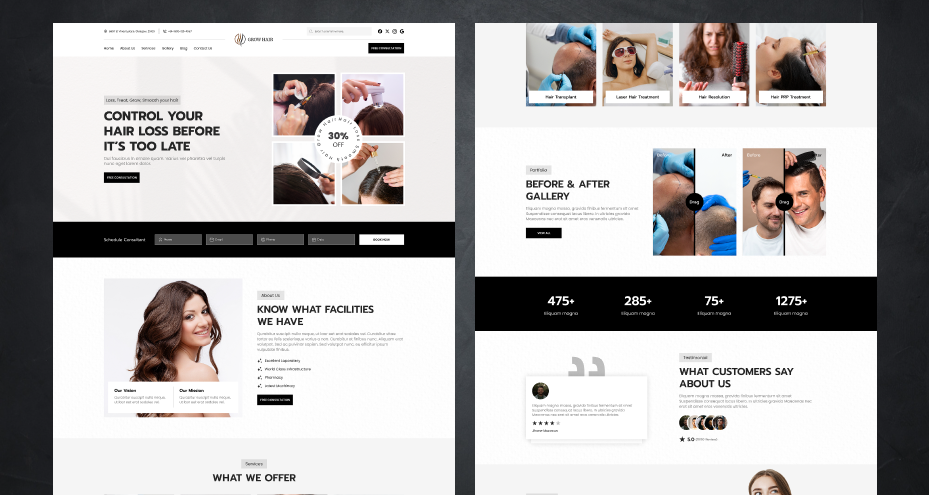
Get This Template
This template comes with a front-end ready solution to save you time from coding every single line manually. As the foundation is already built, you can focus on the more complex tasks involved in development.
Here’s a glimpse of what you get in this template:
-
Professional user interface design
-
High-converting UX
-
Appointment booking page
-
Captivating hero section
-
Testimonials
-
CTA buttons
-
Service page
-
Other pages (blog, gallery, contact)
Don’t wait now. Buy this template and make your client’s online salon shop truly professional to suit their budget and preferences.
Still need help? Get a live preview of the template and see for yourself why it’s useful.
Conclusion
The hair salon website has been developed with one intention: more bookings. Through the implemented features, it can be done. With smart solutions for web development, the process becomes flexible for development teams: using website templates. It proves to be helpful for salon startups that can’t afford a multi-thousand-dollar cost for development, but still need a professional look to their brand.
FAQs
-
How can I make a hair salon website load faster?
Use compressed images, lightweight themes, browser caching, and a CDN. Optimize code and scripts under a 3-second load time for an excellent salon website user experience.
-
What colors work best for salon branding online?
Soft neutrals, pastel tones, and warm metallic accents often appeal to salon audiences. Choose hues that reflect the salon’s style—minimalist, luxury, or bold fashion-focused.
-
What is the ideal homepage layout for hair salon websites?
A visually clean design with a hero image, key services, testimonials, and a “Book Now” CTA. The homepage must clearly communicate brand identity and purpose immediately.
-
Why should salon websites include social media integration?
Social feeds build credibility and show real-time salon activity. Embedding Instagram or TikTok increases engagement, encourages sharing, and highlights authentic work done by stylists.
-
What is the best font style for salon website branding?
Pair elegant serif headers with clean sans-serif body text. Fonts like Playfair Display and Lato balance modern aesthetics with readability, perfect for beauty-oriented audiences.
-
What are the best frontend technologies for a modern hair salon website?
For front-end website development, use React.js, Next.js, or Vue.js for fast, interactive user interfaces. These frameworks offer seamless navigation, smooth animations, and an exceptional website user experience across devices.
-
What backend technologies are best for salon websites?
Node.js, Express, Laravel, and Django are excellent options. They provide scalable architecture, fast performance, and secure APIs ideal for booking and client management systems.
-
What database systems work best for salon website backends?
PostgreSQL, MySQL, and MongoDB are preferred. They offer reliability, scalability, and secure handling of client bookings, reviews, and loyalty program data.
-
What cloud platforms are suitable for hosting salon websites?
AWS, Google Cloud, and Vercel are top-tier choices. They offer reliable uptime, global CDN, and easy deployment for both frontend and backend applications.
-
Can a headless CMS be used for salon website frontend development?
Absolutely. Combine Next.js with Contentful, Sanity, or Strapi to manage dynamic content efficiently, ensuring faster updates and flexible, SEO-friendly beauty salon website content delivery.
 BTC - Bitcoin
BTC - Bitcoin
 USDTERC20 - USDT ERC20
USDTERC20 - USDT ERC20
 ETH - Ethereum
ETH - Ethereum
 BNB - Binance
BNB - Binance
 BCH - Bitcoin Cash
BCH - Bitcoin Cash
 DOGE - Dogecoin
DOGE - Dogecoin
 TRX - TRON
TRX - TRON
 USDTTRC20 - USD TRC20
USDTTRC20 - USD TRC20
 LTC - LiteCoin
LTC - LiteCoin

